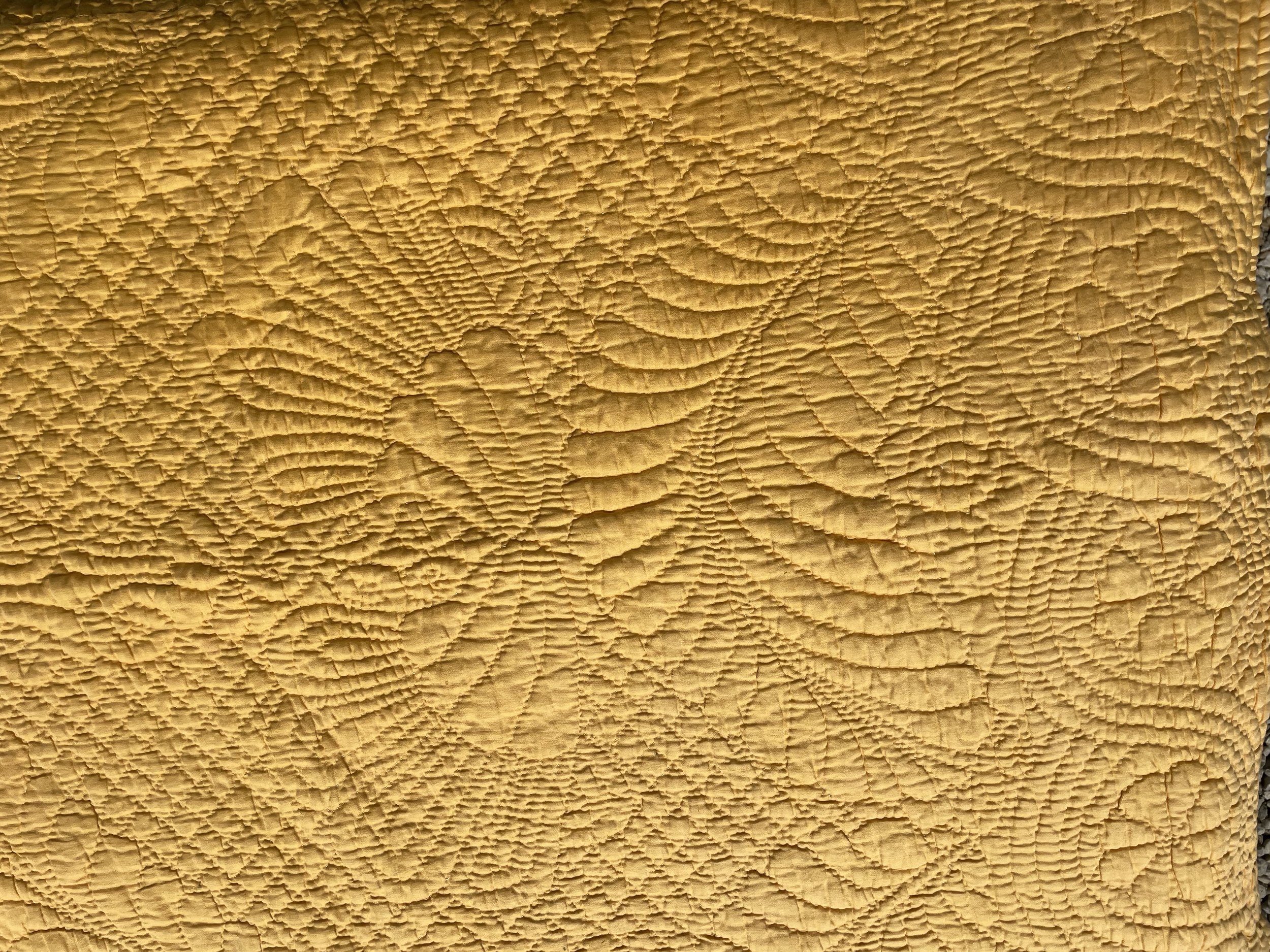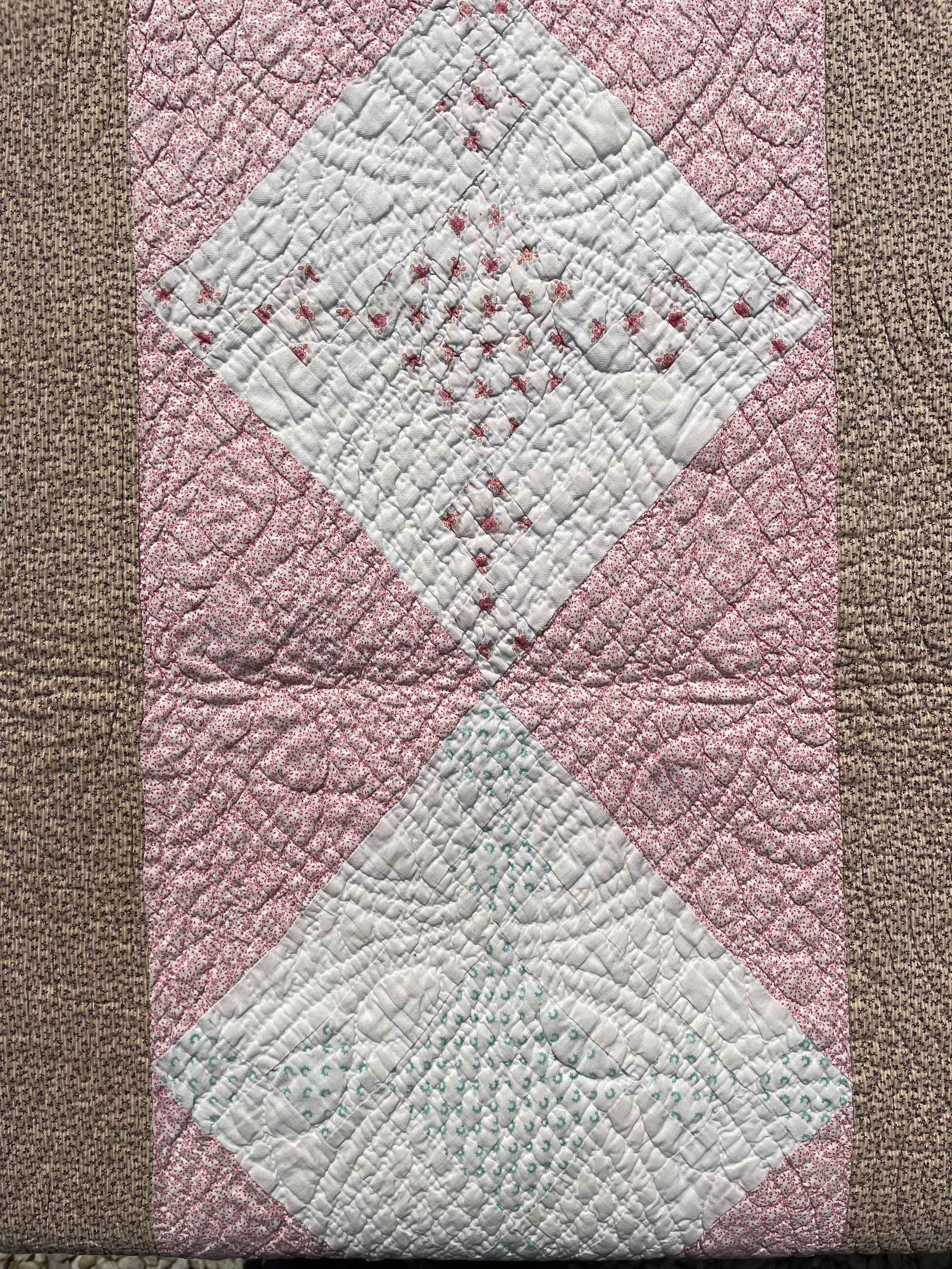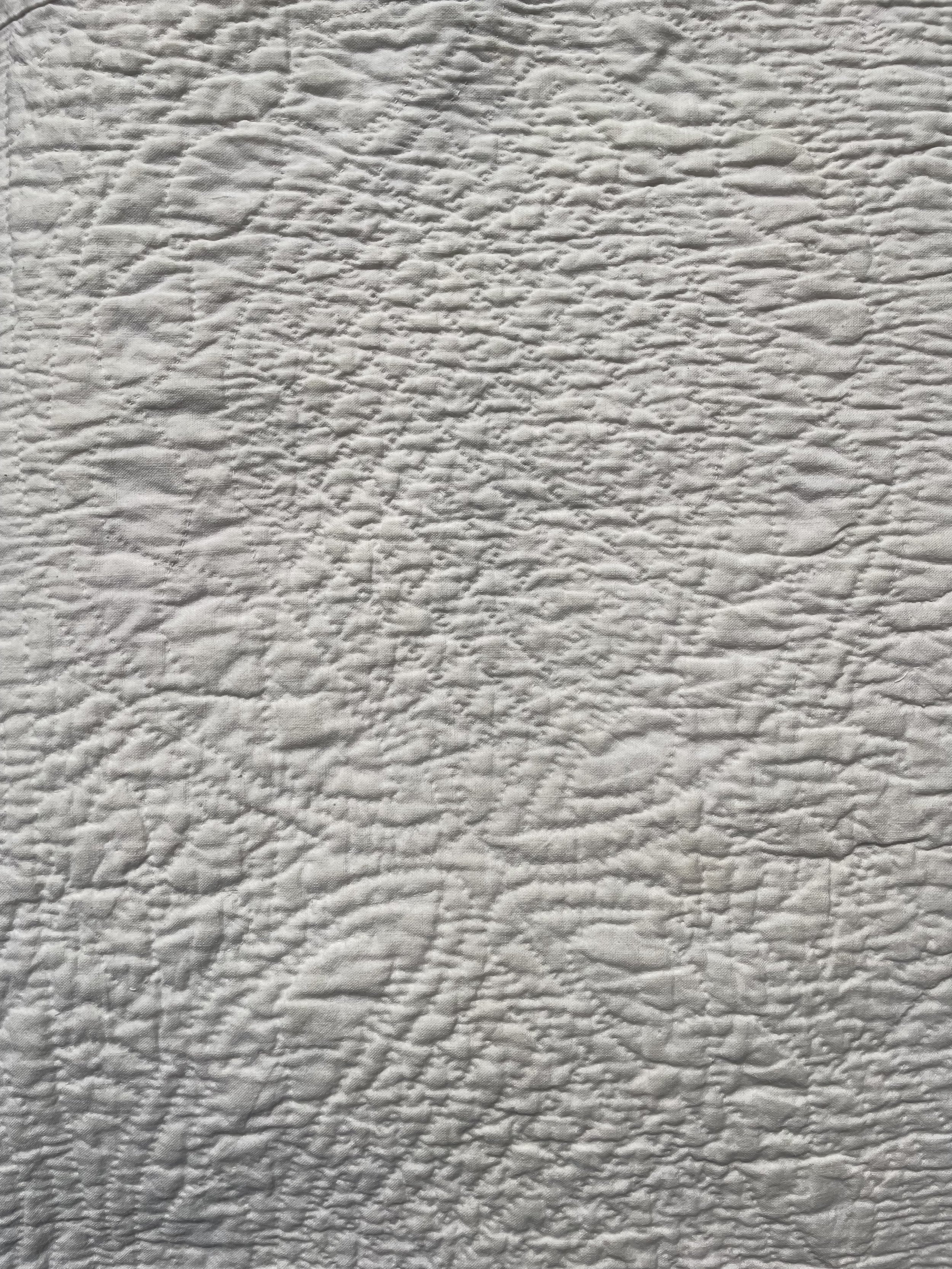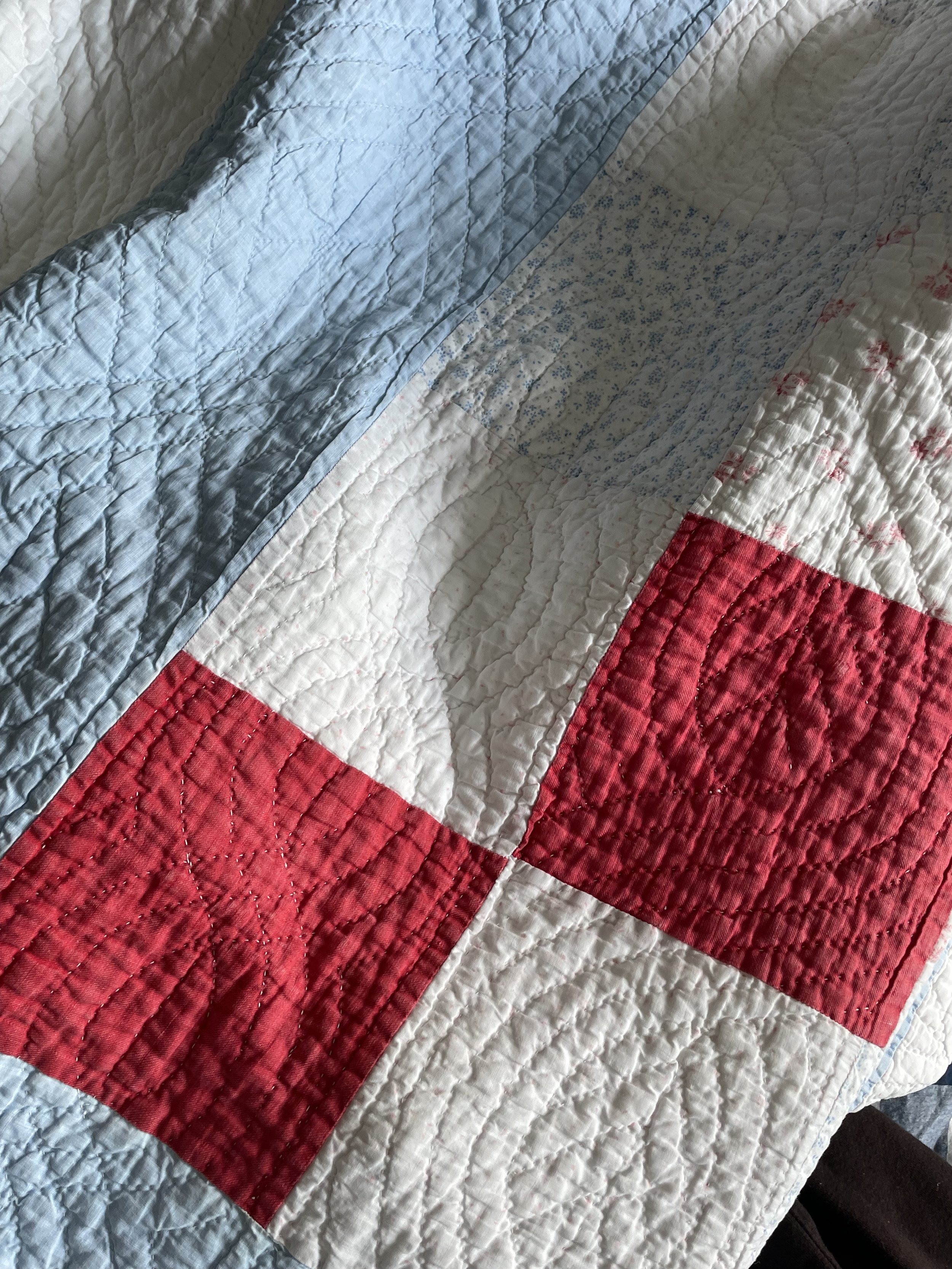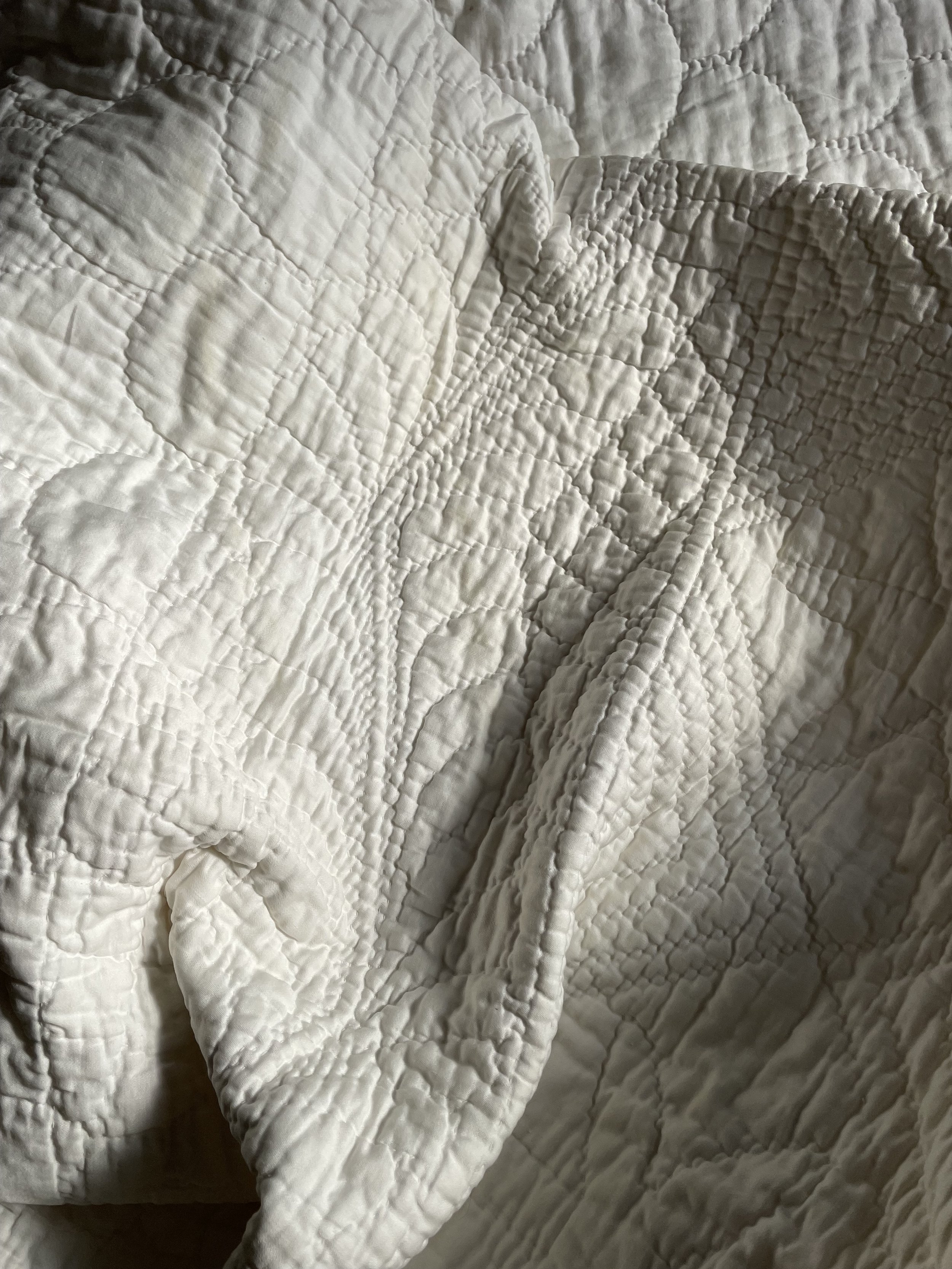Gather Around the Frame
How do I begin?
How do I participate in carrying this tradition forward?
We are working in partnership with other heritage industries to help make available the tools and materials that were once so closely associated with quilt making in Britain. Click on ‘Revival’ for more details.
Most of these resources were local, and many were rooted in sustainable practices. Our academic research can inform development and help to facilitate the tools to meet the growing demand to explore these skills again.
Check back as we continue to develop our network of local sustainable sources, helping to reconnect makers with this heritage craft’s traditional local materials and tools.
The Components of Quilting
-

Drafting Patterns
Understand how creative repetition of template shapes lies at the heart of drafting patterns.
-
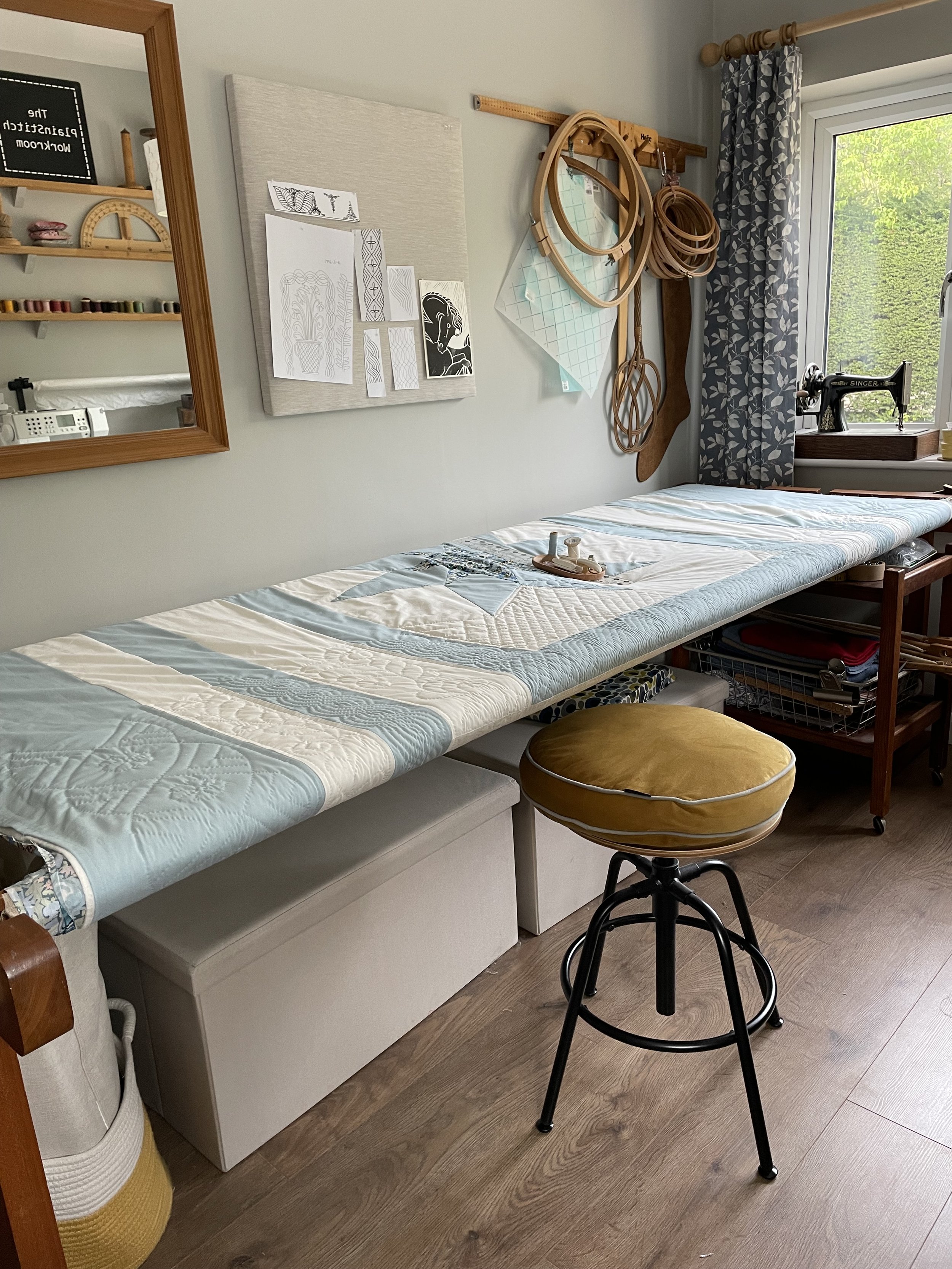
Loading a Frame
Understand the simple components of the frame, and how to load your quilt.
-
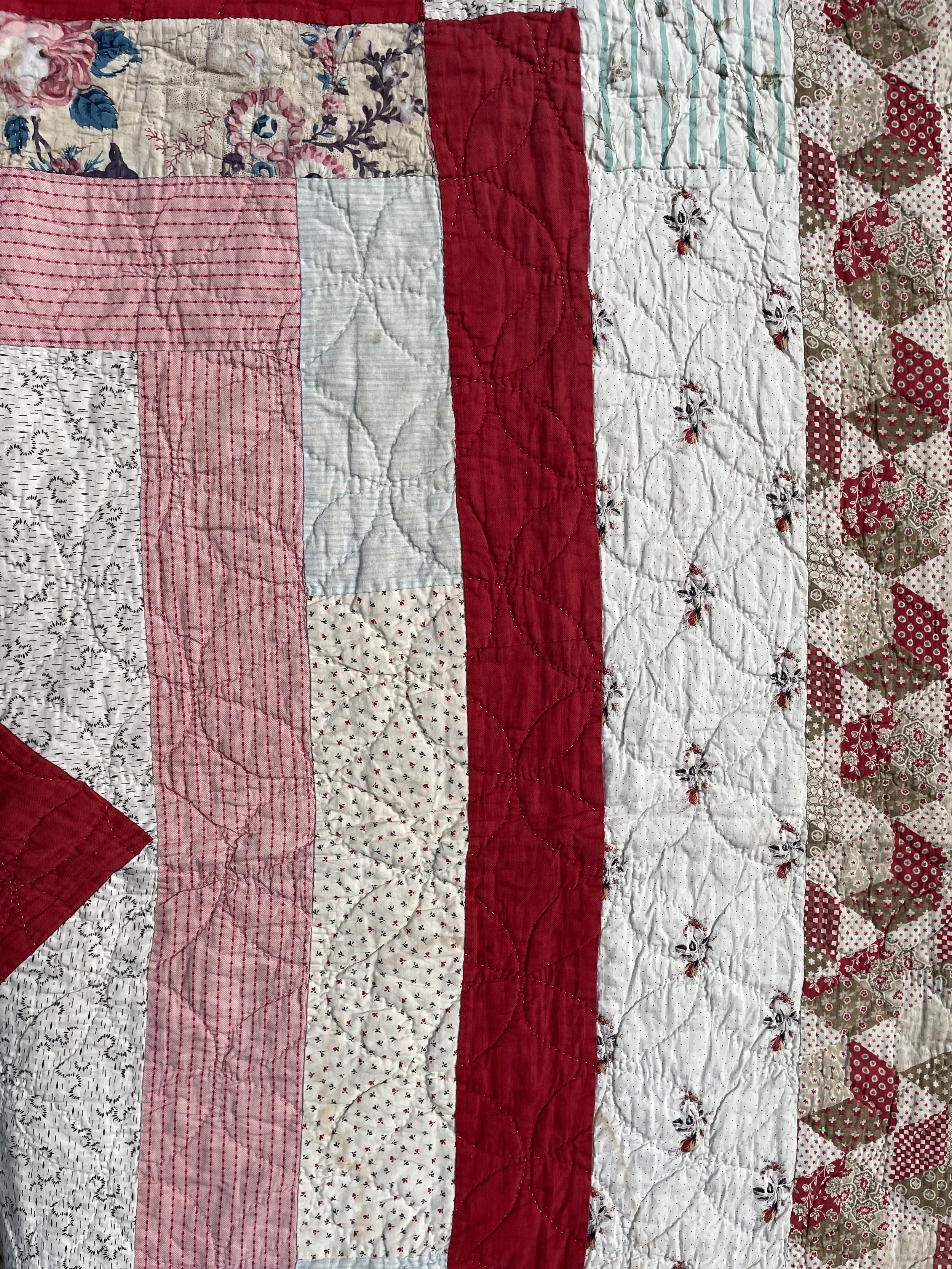
Quilting in a Frame
Understand how the rocking technique works in harmony with the frame to create balanced and efficient stitches.
If we consign a practice to the past without a backward glance we lose valuable accrued wisdom which might inform future making.
Hand quilting in the frame rejuvenates approaches rooted in old knowledge, encouraging us to think again about how we make today.
Explore a practice which generations of makers had refined. Let it inform new gentle ways to make modern quilts in our evolving world.

Whilst we do not teach hand quilting in a frame, additional resources about frame quilting can be found through Deb McGuire’s historically informed practice. Enjoy these instructive reads about the history and present practice of frame quilting.
A word on Pragmatism and Perfectionism.
Quilt makers in the past made quilts for use and ornament. The wide range of skills and execution of quilting stitches encountered in extant quilts speaks to this vast diversity of approach.
The human hand is not a machine. Revel in your unique stitch. Texture is key.
The mid century quilter Mary Lough reminded an interviewer that the creative focus should not be the stitches, “the bumps are the pattern”.
